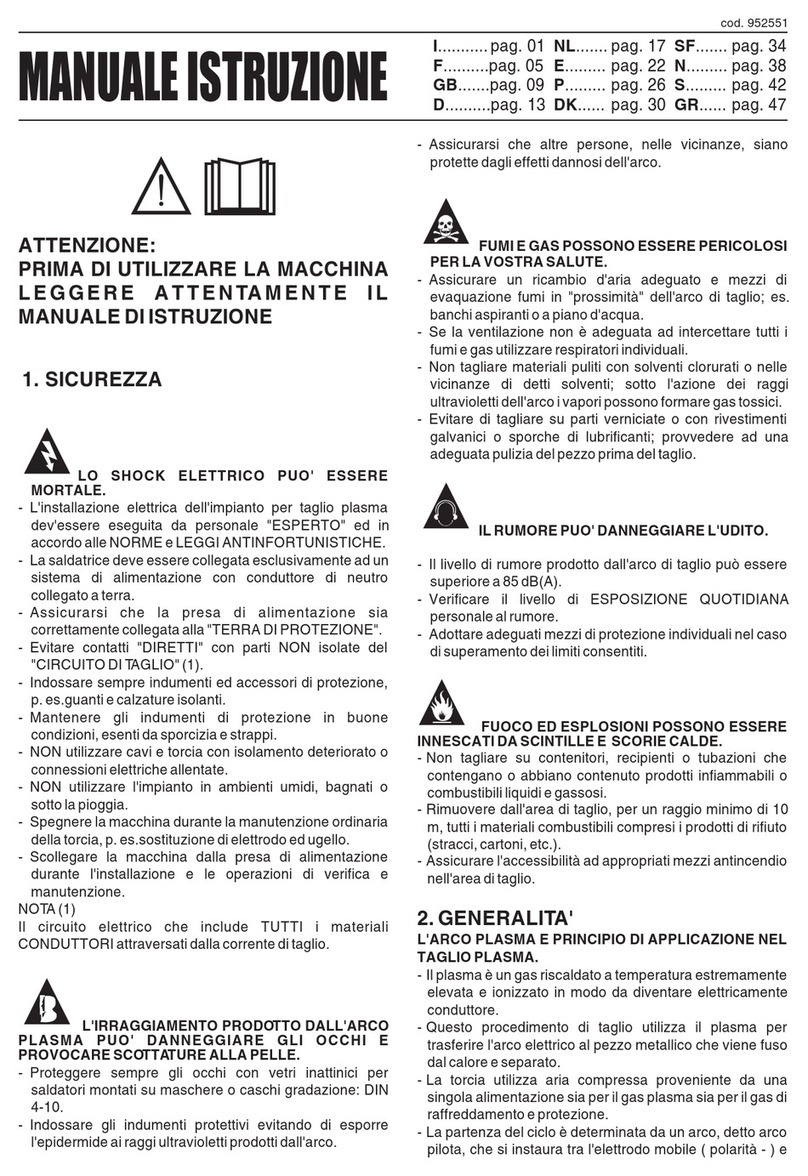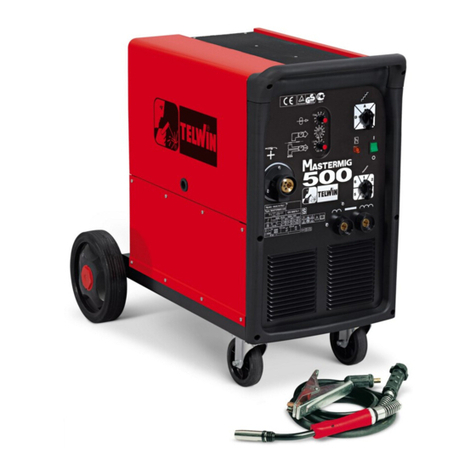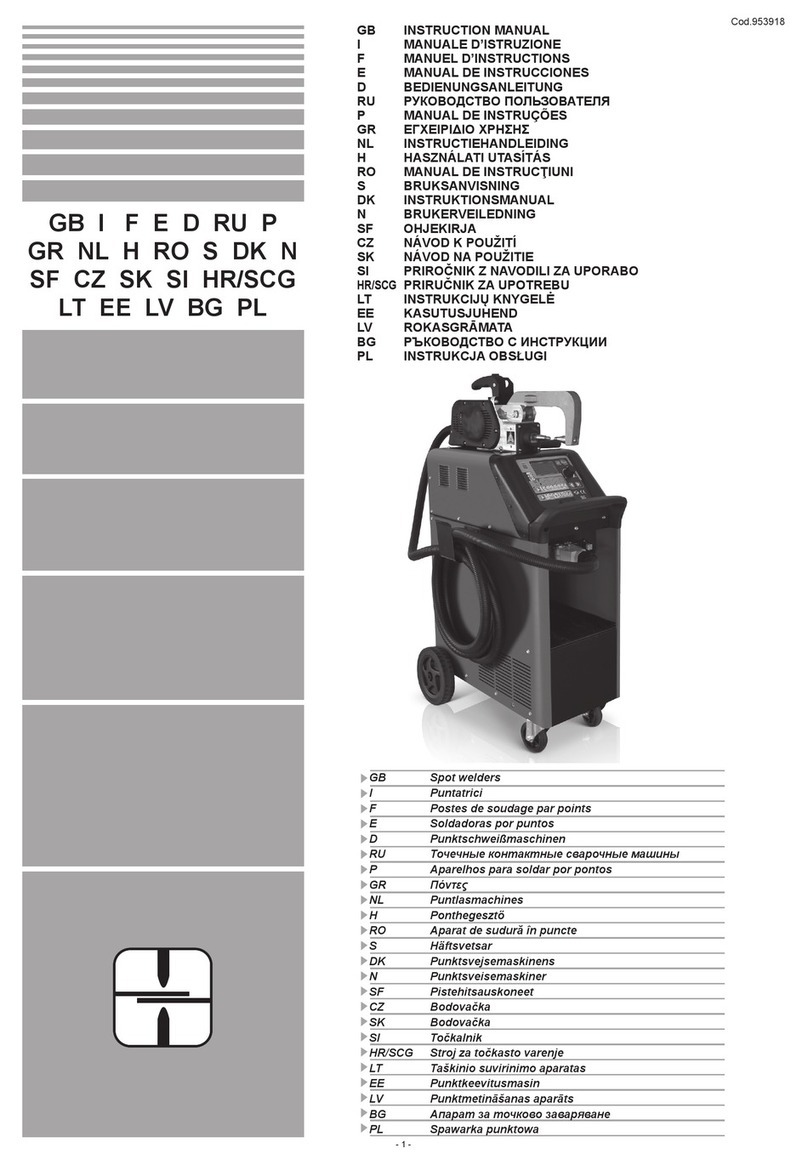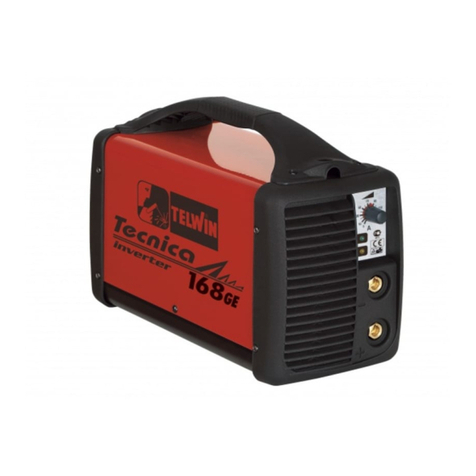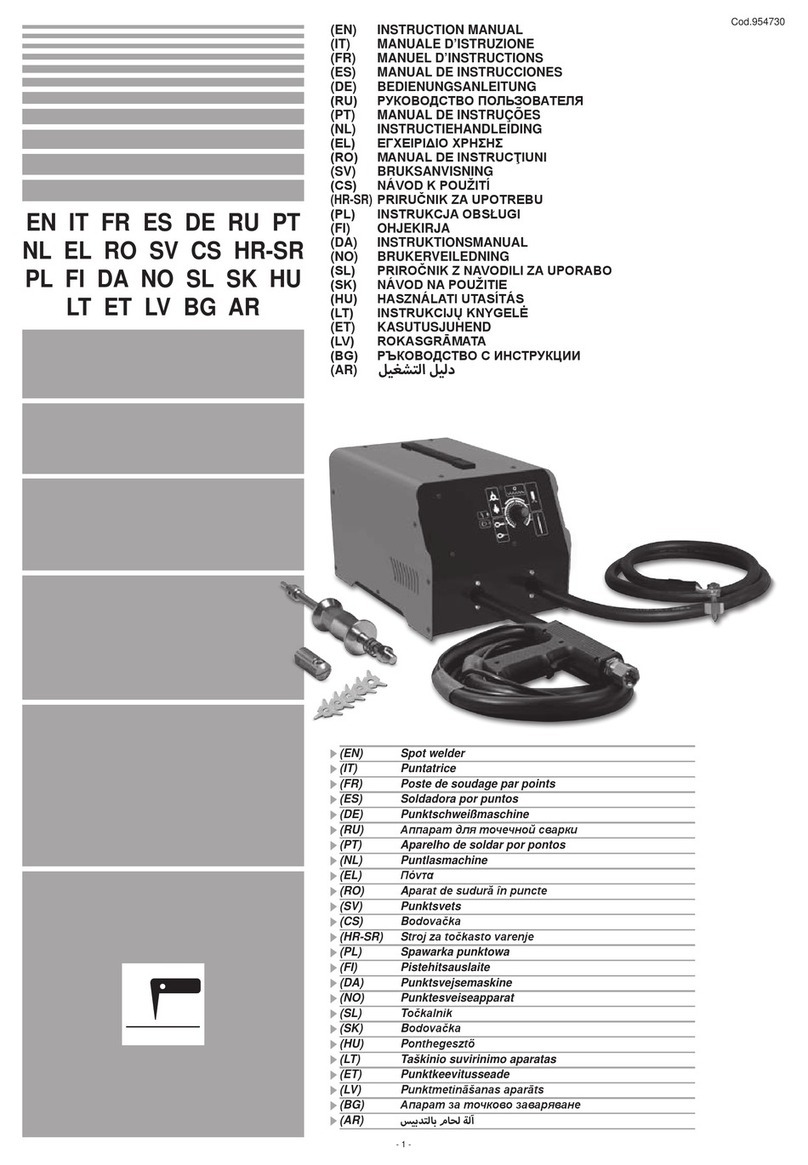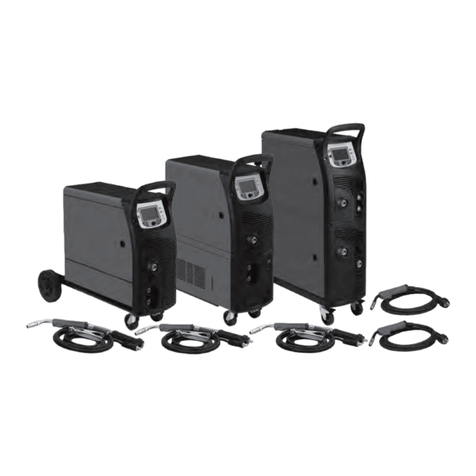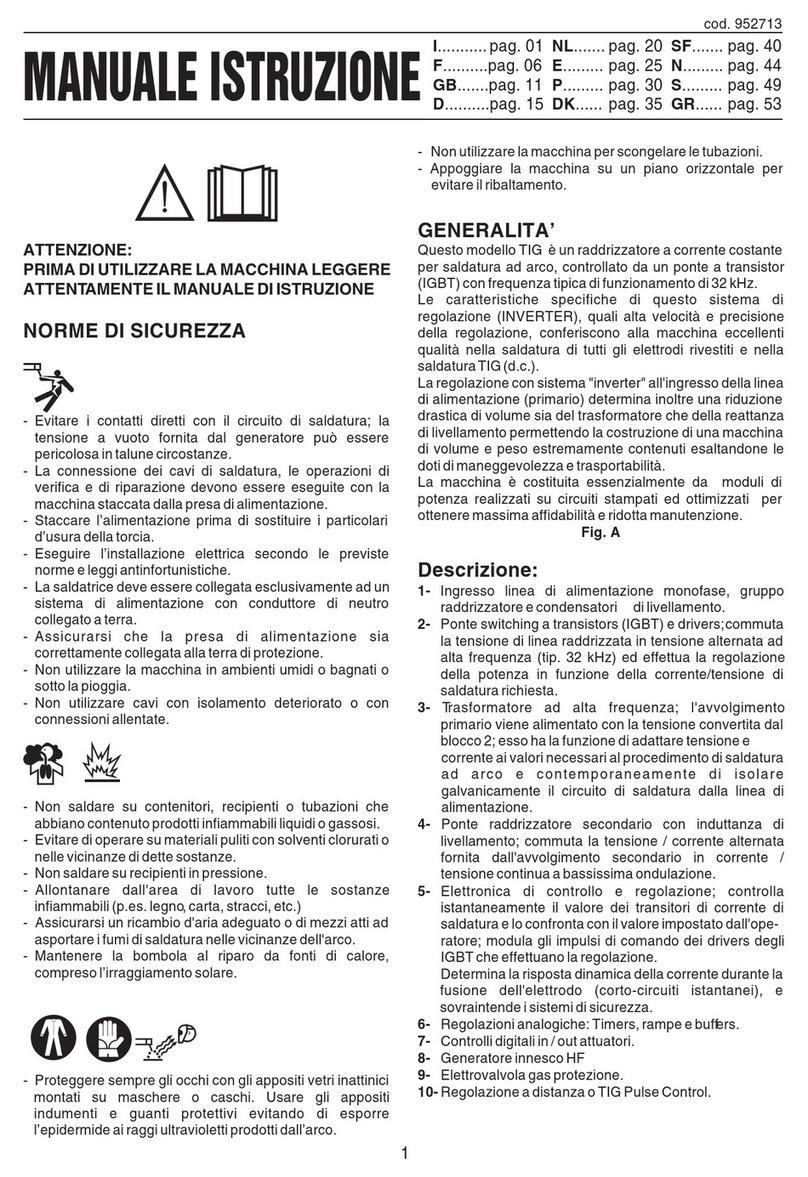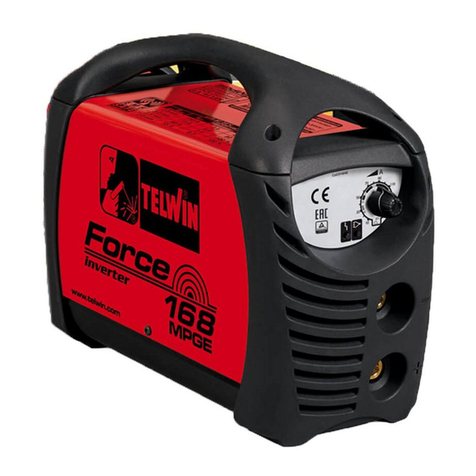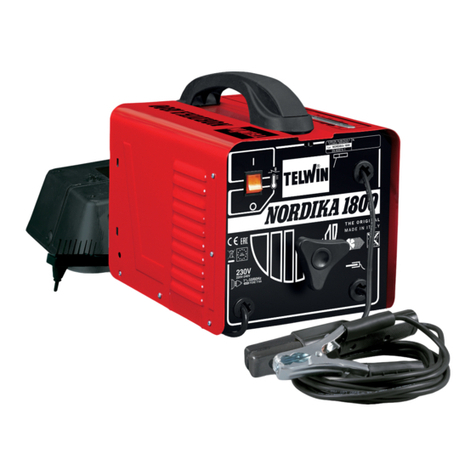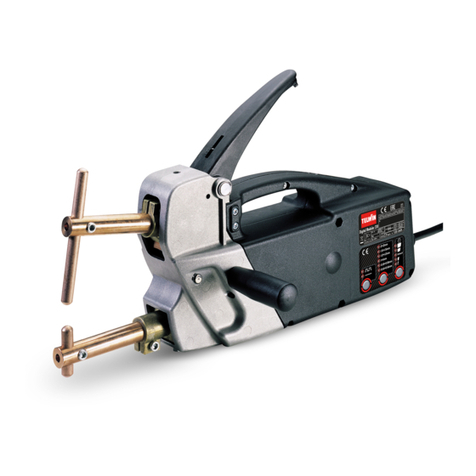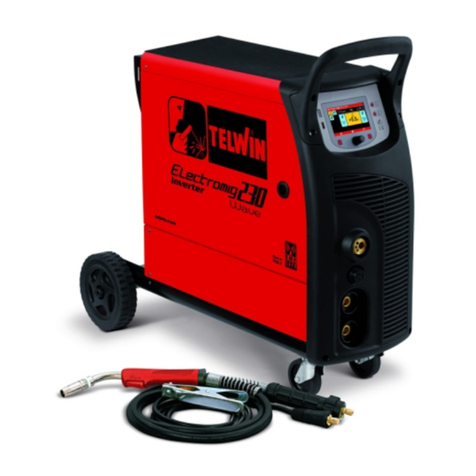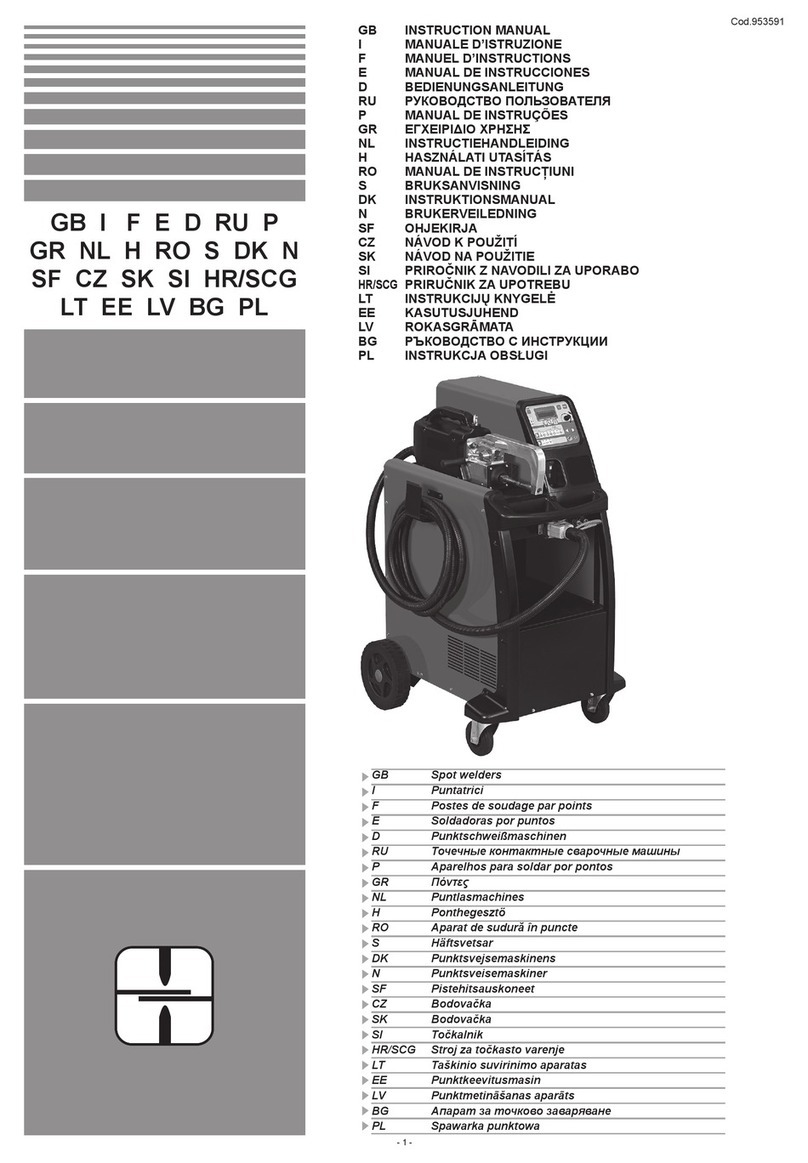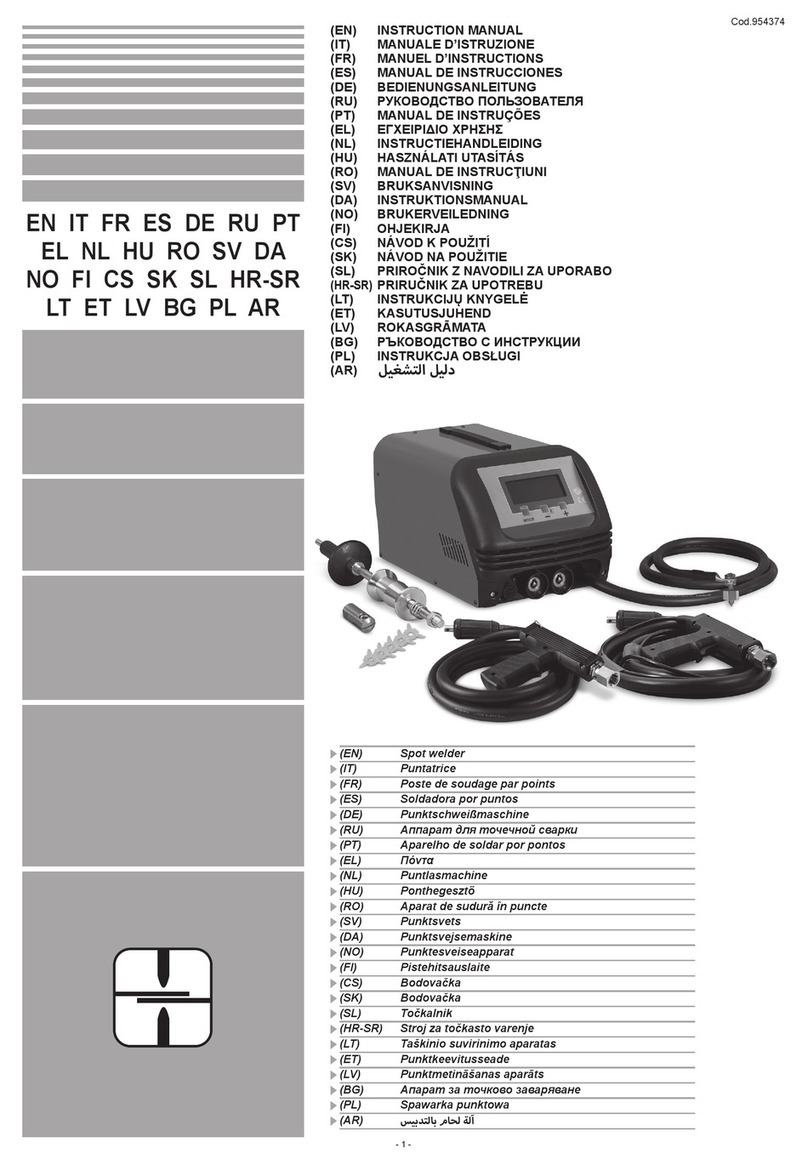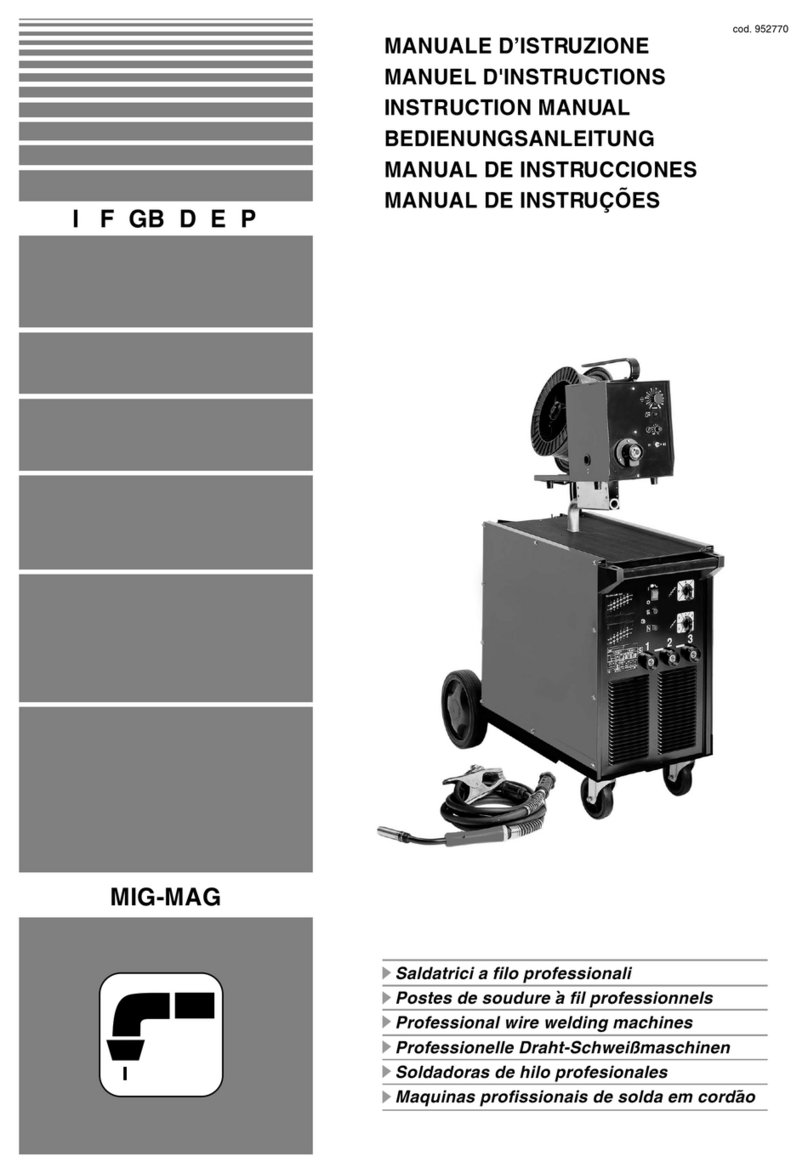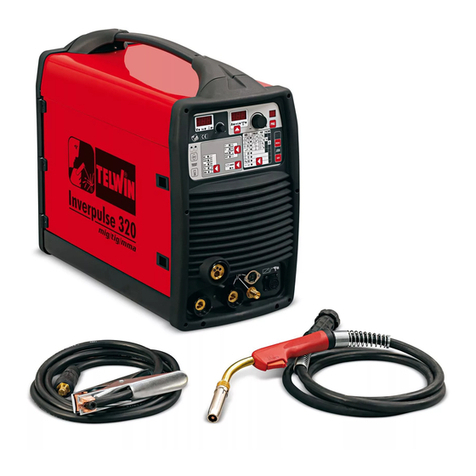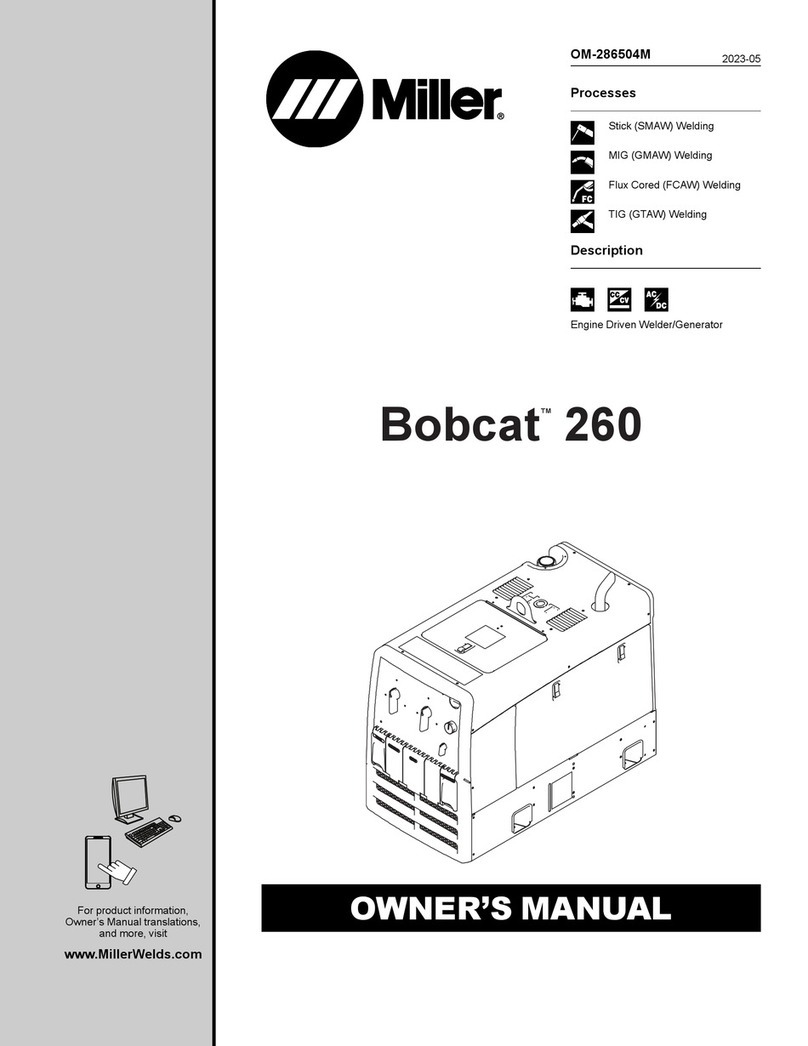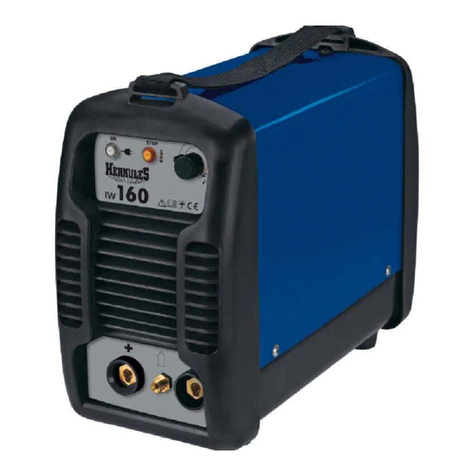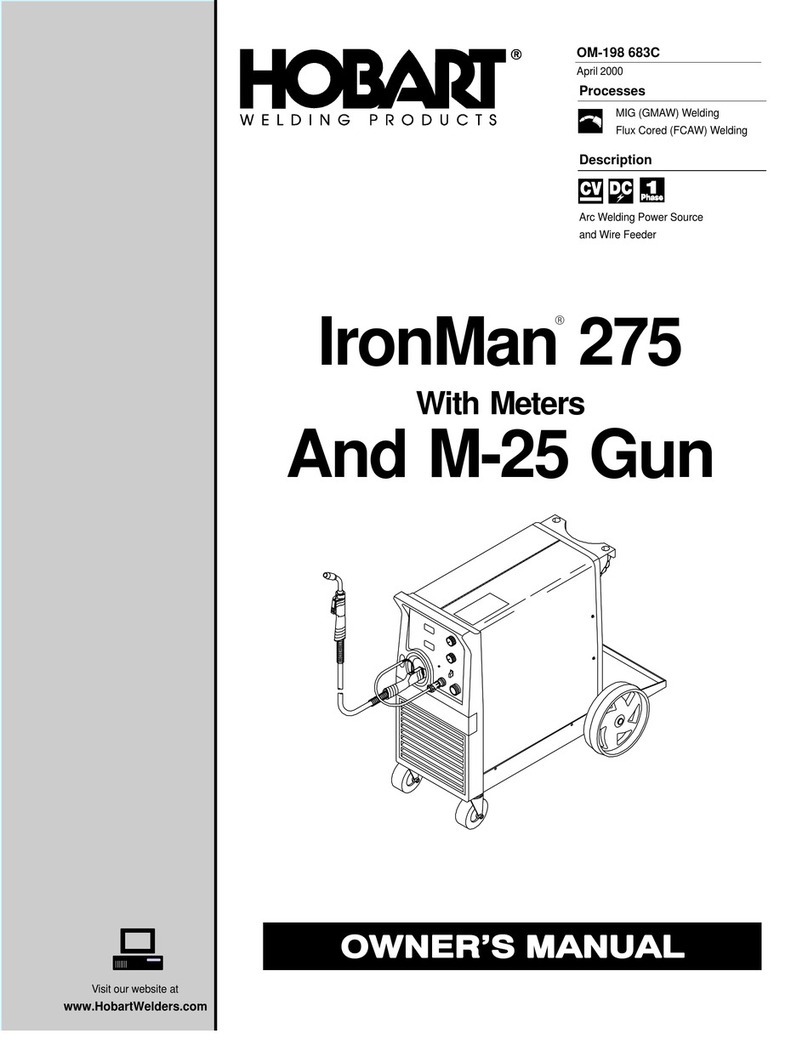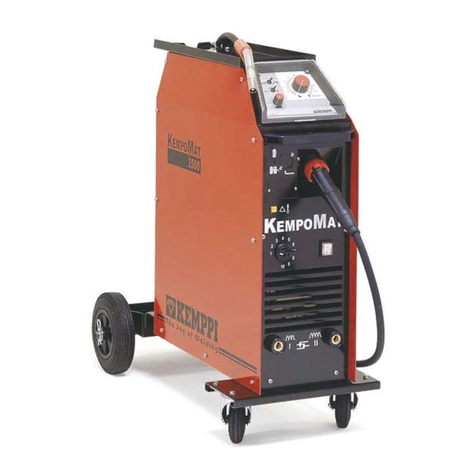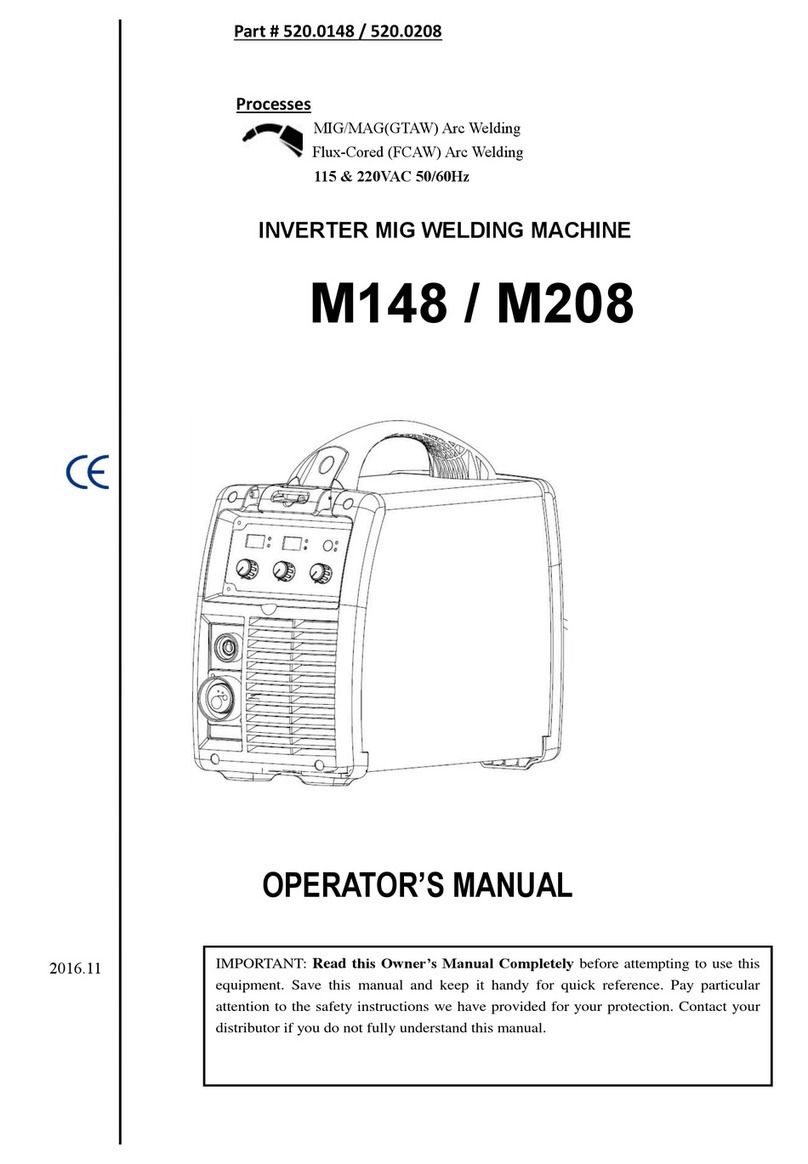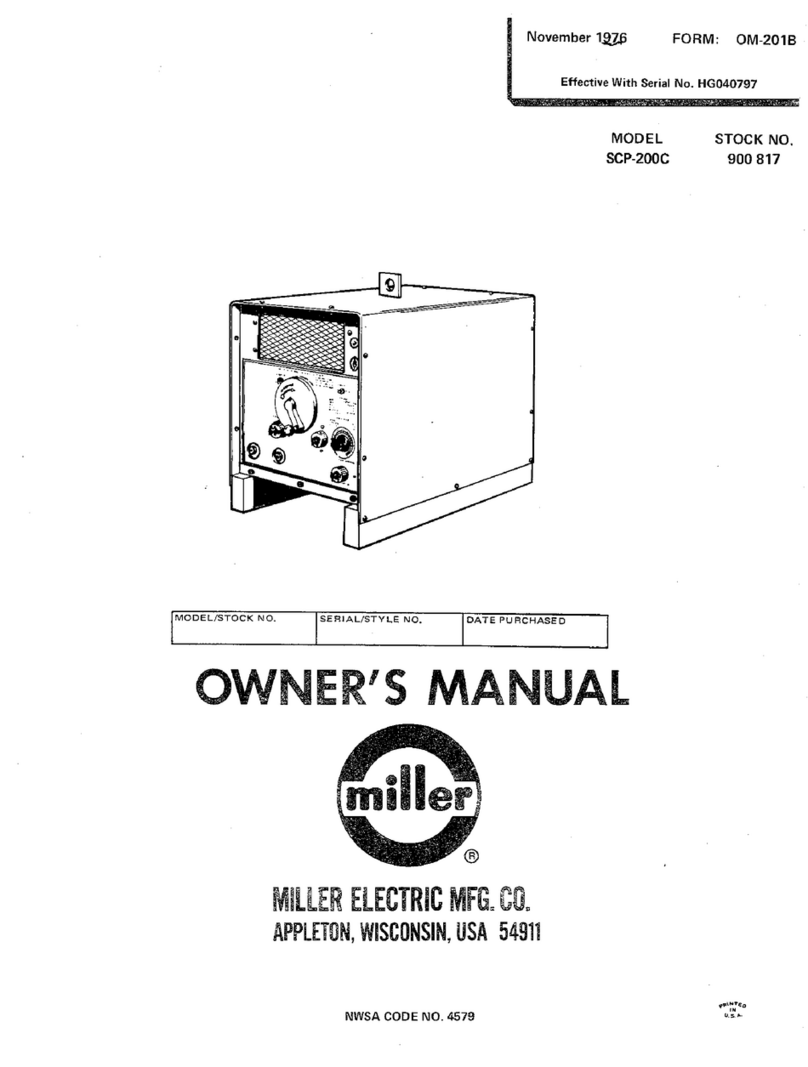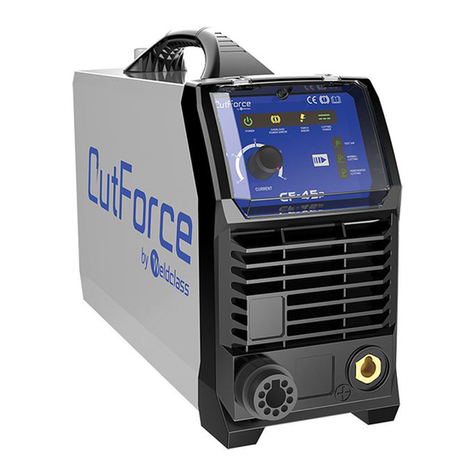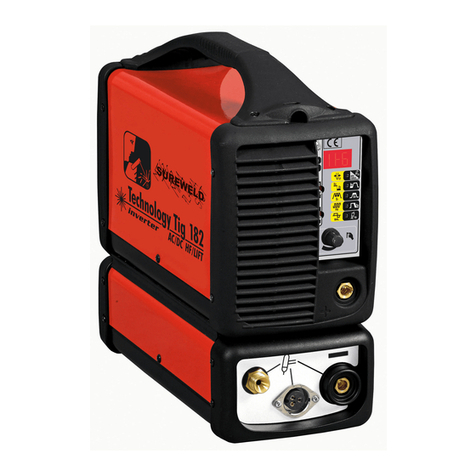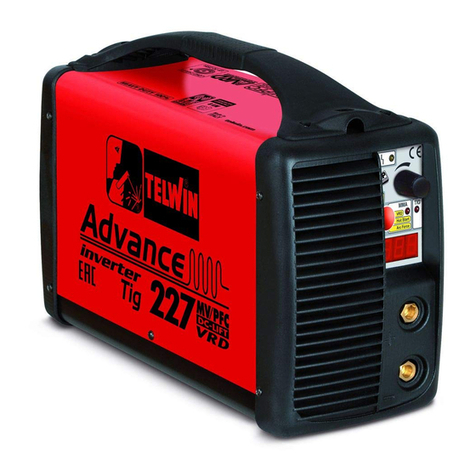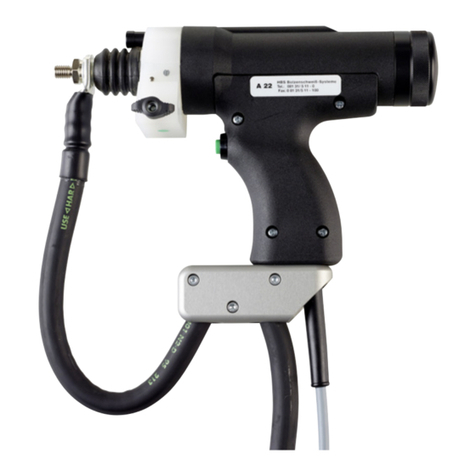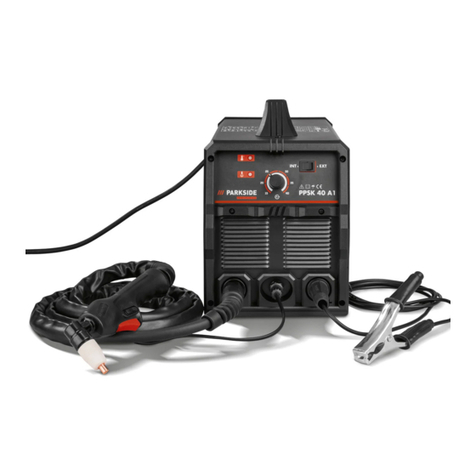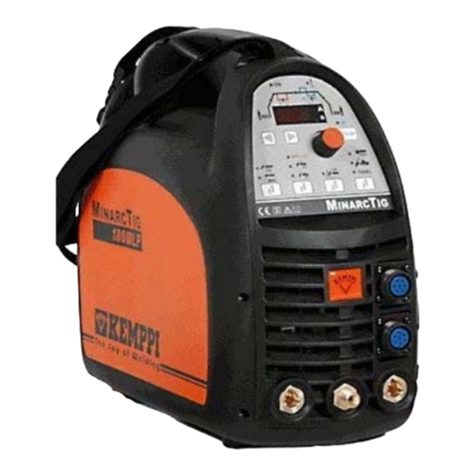
-
-
N.B.
-
fig.3
fig.3
WARNING!
fig.3
fig.3
fig.3
WARNING!
WARNING!
fig.3
rheoforesofopto-couplersISO1andISO2;
rheoforesofconnectorsJ4andJ6;
Do this if it is necessary to remove the primary board, otherwise it
is possible to clean the part superficially from the side of the
secondaryboard.
If the primary and secondary boards are removed (with the
diaphragm), carefully clean all the parts fastened to the base, or
cleanthebasepartiallyfromthesidesofthemachine.
Make sure there is no mechanical deformation, dent, or damaged
and/ordisconnectedconnector.
Make sure the power supply cable has not been damaged or
disconnected internally and that the fan works with the machine
switched on. Inspect the components and cables for signs of
burning or breaks that may endanger operation of the power
source.Checkthefollowingelements:
Probablecause:
- see main power supply switch. If the relay contacts are
stuck together or dirty, do not attempt to separate them and
cleanthem,justreplacetherelay.
Probablecause:
- mechanicalshock;
- machineconnected to powersupply voltagemuch higherthan
theratedvalue;
- brokenrheophoreononeormorecapacitor:theremainderwill
beoverstressedandbecomedamagedbyoverheating;
- ageingafteraconsiderablenumberofworkinghours;
- overheatingcausedbythermostaticcapsulefailure.
Probablecause:
- discontinuationinsnubbernetwork,
- faultindrivercircuit
- poorly functioning thermal contact between IGBT and
dissipator(e.g.loosenedattachmentscrews:check),
- excessiveoverheatingrelatedtofaultyoperation
Probablecause:
- excessiveoverheatingrelatedtofaultyoperation.
Probablecause:
-mechanicalshock.
Probablecause:
- discontinuationinsnubbernetwork;
- poorly functioning thermal contact between IGBT and
dissipator(e.g.loosenedattachmentscrews:check);
- faultyoutputconnection.
Checkitforcolourchanges.
Probablecause:
overheatingduetolooseningofthescrewsconnectingtheshunt
tothePCB.
Inspectthewindingsforcolourchanges.
Probablecauses:
- agingafterasubstantialnumberofworkinghours;
- excessiveoverheatingrelatedtofaultyoperation.
It is important to check that all the connections are in good
condition and the connectors are inserted and/or attached
correctly.To do this, takethe cables betweenfinger and thumb (as
close as possible to the fastons or connectors) and pull outwards
gently: the cables should not come away from the fastons or
connectors.N.B.Ifthepowercablesarenottightenoughthiscould
causedangerousoverheating.
A) With the multimeter set on diode testing check the following
components(jointvoltagesnotlessthan0.2V):
- rectifierbridgesD3,D5( );
- IGBT's Q1, Q2, Q3, Q4, (no short circuits between collector-
gateandcollector-emitter( );
Beforeproceedingwithfaultfinding,weshouldremind
you that during these tests the power source is powered and
thereforetheoperatorisexposedtothedangerofelectricshock.
The tests described below can be used to check the operation of
thepowerandcontrolpartsofthepowersource.
A) From the primary board, disconnect fastons CN3 (XF+) and
CN10(XF-)forthepowertransformer( ).
B) OntheprimaryboarddisconnectthejumperonJP1.
C) Connect the HV power supply OUT (code 802403) on the
primaryboardasfollows( ):
- (+) Positive (clamp) to rheofore of resistor R35 towards JP1
(afterremovingjumperJP1);
- (-)Negative(faston)tonegativefastonofdiodebridgeD3.
D) Setuptheoscilloscopewiththevoltageprobe x100connected
between the rheofore of R40B (collector Q10) towards JP1
(probe) and the negative of diode bridge D3 (earth) to the primary
board( ).
the high frequency voltage will permanently damage
any instrument connected to the generator. Before proceeding
makeverysurethatthefastonslistedabovearedisconnectedand
completelyisolatedfromoneanother.
F) Connect the power supply cable to a single phase variac with
variableoutput0-300Vac.
during testing prevent contact with the metal part of
the torch because of the presence of high voltages that are
hazardoustotheoperator.
A) Switch on the HV power supply (HV OUT) and make sure that
():
- pre-chargerelaysK1andK2close;
- thefanstartstoturnforthepowertransformer;
Power transformer and inductance assembly
Parts fastened to the base
Relays K1,K2 primary board fig. 3
Electrolytic capacitors C2,C4,C6,C7 primary board (fig.3
IGBT's Q1, Q2, Q3, Q4 primary board (fig. 3)
Primary diodes D1, D4, D6, D8 primary board (fig. 3)
Mode selector switches SW1 and SW3 primaryboard
(fig. 3)
Secondary diodes D1, D2, D3, D5 secondary board (fig. 4)
Shunt R1 secondary board (fig. 6)
Power transformer and filter inductance
3.0 Visual inspection of the machine
4.0 Checking the power and signal wiring
5.0 Electrical measurements with the machine
switched off
6.0 Electrical measurements with the machine in
operation
()
)
.
6.1 Preparation for testing
6.2 Scheduled tests
Secondary board (fig. 4):)
-
-
-
fig.4
fig.3 fig.3
fig.4
fig.4
rheofores of secondary power diodes D1, D2, D3, D5 (N.B.not
presentonTechnology150);
thermostatST1onsecondarydiodedissipator;
shuntR1.
- secondary diodes D1, D2, D3, D5 between anode and
cathode ( ).The secondary diodes can be tested without
removingtheprimaryboard, placing aprodon thesecondary
diode dissipator and the other in sequence on the 2 power
transformeroutputterminals.
B) With the multimeter in ohm mode check the following
components:
- resistorR1:47ohm(precharge ).
- resistorsR2,R6:10ohm(primarysnubber ).
- resistorR1:10ohm(secondarysnubber ).
- thermostat continuity test on inductance and secondary
dissipator: disconnect connector J2 from the primary board
andmakesuretheresistancebetweenpins4and5isapprox.
0ohm( ).
E) Position the current potentiometer R16 on maximum (turn
clockwiseasfarasitwillgo)andswitchSW1toSOFT(asfardown
asitwillgo);
Current potentiometer R16 (fig. 3)
Probablecause:
- mechanicalshock.
-12-
TECHNOLOGY 150-170-200-186CE/GE




















